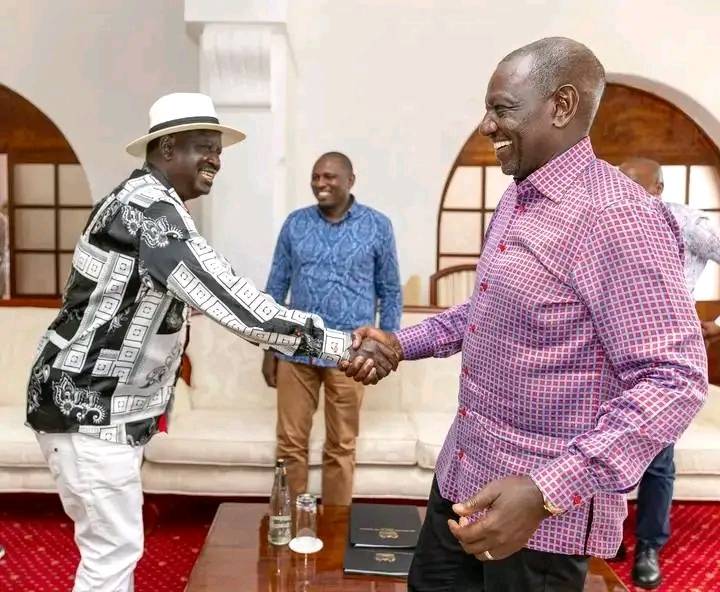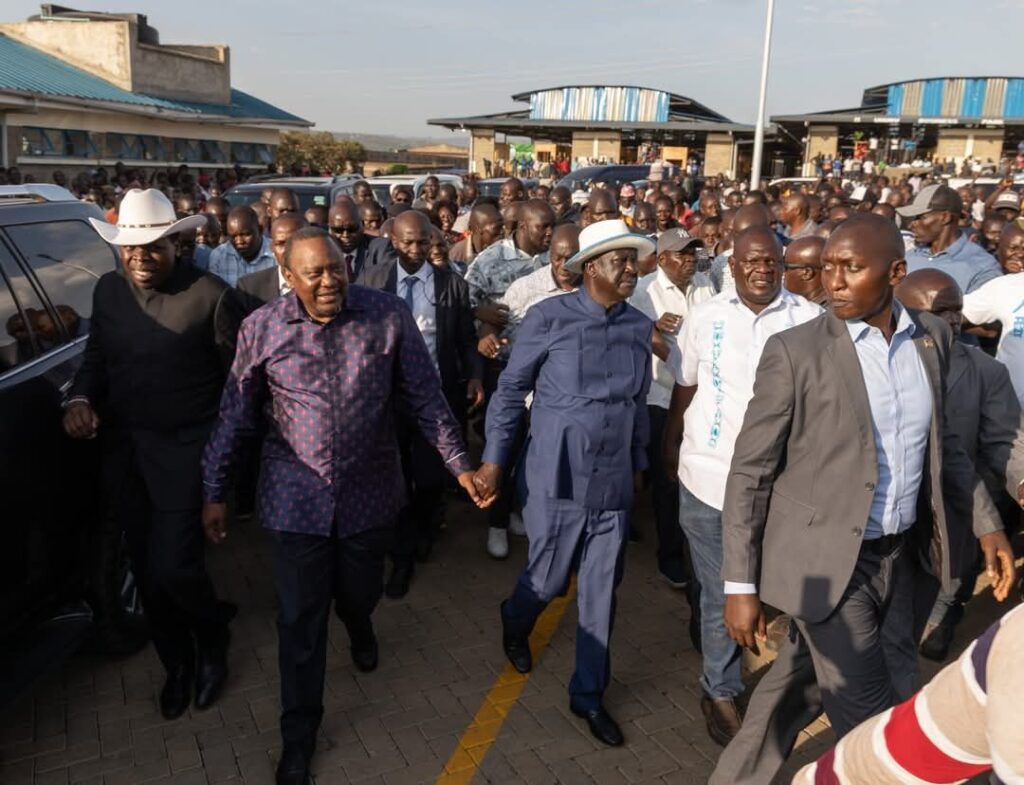
Raila Odinga is a towering figure in Kenyan politics, revered by his supporters as a champion of democracy and criticized by his detractors as a political opportunist. Born on January 7, 1945, in Maseno, Kisumu County (formerly Nyanza Province), Raila has spent decades shaping Kenya’s political landscape. The son of Jaramogi Oginga Odinga, Kenya’s first Vice President, Raila’s political career has been marked by resilience, controversy, and an unyielding quest for leadership.
Over the years, he has been imprisoned, exiled, and accused of betraying his allies, yet he remains a formidable force in Kenyan politics. His career spans multiple political parties, alliances, and ideological shifts, raising the question: Is Raila Odinga a statesman dedicated to Kenya’s progress, or is he a political tactician driven by personal ambition?
Raila Odinga’s Early Life and Education
Raila Odinga attended Kisumu Union Primary School before moving on to Maranda Primary in Bondo and Maranda High School. In 1962, his father sent him to Germany for further studies. He spent several years in Germany, but critics have frequently questioned his academic background, with some alleging that he studied welding rather than engineering. Raila, however, has consistently maintained that he holds an engineering degree.
Business Ventures and Early Career
Upon returning to Kenya in 1970, Raila established Standard Processing Equipment Construction & Erection Ltd, which later became East African Spectre. The company remains Kenya’s leading manufacturer of liquid petroleum gas cylinders. In 1974, he was appointed Group Standards Manager at the Kenya Bureau of Standards and later promoted to Deputy Director in 1978. His tenure in the public sector was cut short in 1982 when he was arrested for his alleged involvement in a coup attempt against President Daniel Arap Moi.
The 1982 Coup and Political Persecution
On August 1, 1982, a faction of the Kenya Air Force, led by Senior Private Hezekiah Ochuka, attempted to overthrow the Moi government. The coup failed, and the government responded with mass arrests, executions, and sweeping security reforms. Raila was among those accused of being one of the masterminds. He was detained for six years without trial.
Released in 1988, Raila was re-arrested in August of the same year for his involvement in pro-democracy activism. At the time, Kenya was still a one-party state, and opposition voices were brutally suppressed. After his second release in 1989, he was arrested again in 1990, alongside prominent opposition figures Kenneth Matiba and Charles Rubia. Fearing for his life, he fled to Norway in 1991.
Raila Odinga’s Return to Kenya and Entry into Multiparty Politics
During Raila’s exile, the Forum for the Restoration of Democracy (FORD) was established to challenge Moi’s authoritarian rule and advocate for multiparty democracy. He returned to Kenya in 1992 and joined FORD, then led by his father, Jaramogi Oginga Odinga. The party soon split into FORD-Kenya, led by Jaramogi, and FORD-Asili, led by Kenneth Matiba. Raila aligned himself with FORD-Kenya and successfully ran for the Lang’ata parliamentary seat, marking the beginning of his formal political career.
After his father’s death in 1994, Raila vied for the leadership of FORD-Kenya against Michael Wamalwa Kijana. When he lost the bid, he left the party and joined the National Development Party (NDP), a move that underscored his willingness to shift allegiances in pursuit of power.
The 1997 Presidential Election and the KANU Merger
In the 1997 elections, Raila ran for president under the NDP but finished third behind Moi and Mwai Kibaki. He, however, retained his Lang’ata parliamentary seat. In a surprising turn, he chose to work with President Moi, merging NDP with Moi’s Kenya African National Union (KANU) party. This move angered many of his supporters, who viewed it as a betrayal.
In 2001, Raila was appointed Minister of Energy, a position he held until 2002. However, his relationship with Moi soured when the president endorsed Uhuru Kenyatta as his successor. Feeling sidelined, Raila and other KANU dissidents left to form the Liberal Democratic Party (LDP), which later merged with the National Alliance Party of Kenya (NAK) to form the National Rainbow Coalition (NARC).
The 2002 Elections and the “Kibaki Tosha” Moment
Raila played a crucial role in uniting the opposition behind Mwai Kibaki, famously declaring “Kibaki tosha” (“Kibaki is sufficient”), which helped solidify Kibaki’s candidacy. NARC won in a landslide, ending KANU’s nearly four decades in power. Raila expected to be rewarded with the position of Prime Minister, but Kibaki failed to honor their pre-election agreement, leading to Raila’s fallout with the administration.
The 2005 Referendum and the Orange Movement
Feeling betrayed, Raila led the opposition against the proposed 2005 constitution, which Kibaki’s administration was pushing. The referendum was a defining moment in Kenyan politics, as Raila’s faction, symbolized by an orange, defeated Kibaki’s camp (represented by a banana). This led to the formation of the Orange Democratic Movement (ODM), which became Raila’s political vehicle.
The 2007 Presidential Election and Post-Election Violence
The 2007 election was one of Kenya’s most contentious. Raila ran against Kibaki, and when the Electoral Commission declared Kibaki the winner, widespread violence erupted, leaving over 1,000 people dead and displacing thousands. International mediation led to a power-sharing deal, with Raila becoming Kenya’s second Prime Minister under the Grand Coalition Government.
The 2013 and 2017 Elections
In 2013, Raila lost to Uhuru Kenyatta in a hotly contested election. He disputed the results but failed to overturn them in court. He ran again in 2017, and when the Supreme Court annulled the results due to irregularities, he boycotted the repeat election, citing lack of reforms.
The 2018 Handshake and 2022 Presidential Bid

In a surprising turn, Raila reconciled with Uhuru Kenyatta in 2018 through the famous “Handshake.” This move alienated his traditional allies, including Deputy President William Ruto, who went on to win the 2022 election against Raila. And after a lot of Demonstrations against Ruto’s Government Raila Odinga is currently the number one Supporter of President Ruto’s Leadership!
Raila Odinga’s legacy is complex. To his supporters, he is a statesman who has sacrificed for Kenya’s democracy, endured political persecution, and played a vital role in constitutional reforms. His push for multiparty democracy, devolution, and electoral reforms cannot be ignored.
However, to his critics, Raila is a political chameleon who frequently shifts alliances for personal gain. His decision to work with Moi, Kibaki, Uhuru and now Ruto, despite earlier opposing them, raises questions about his consistency.
Ultimately, whether one views Raila Odinga as a statesman or a controversial figure depends on perspective. What is undeniable is his impact on Kenyan politics, making him one of the most influential figures in the country’s history.
icpmlp